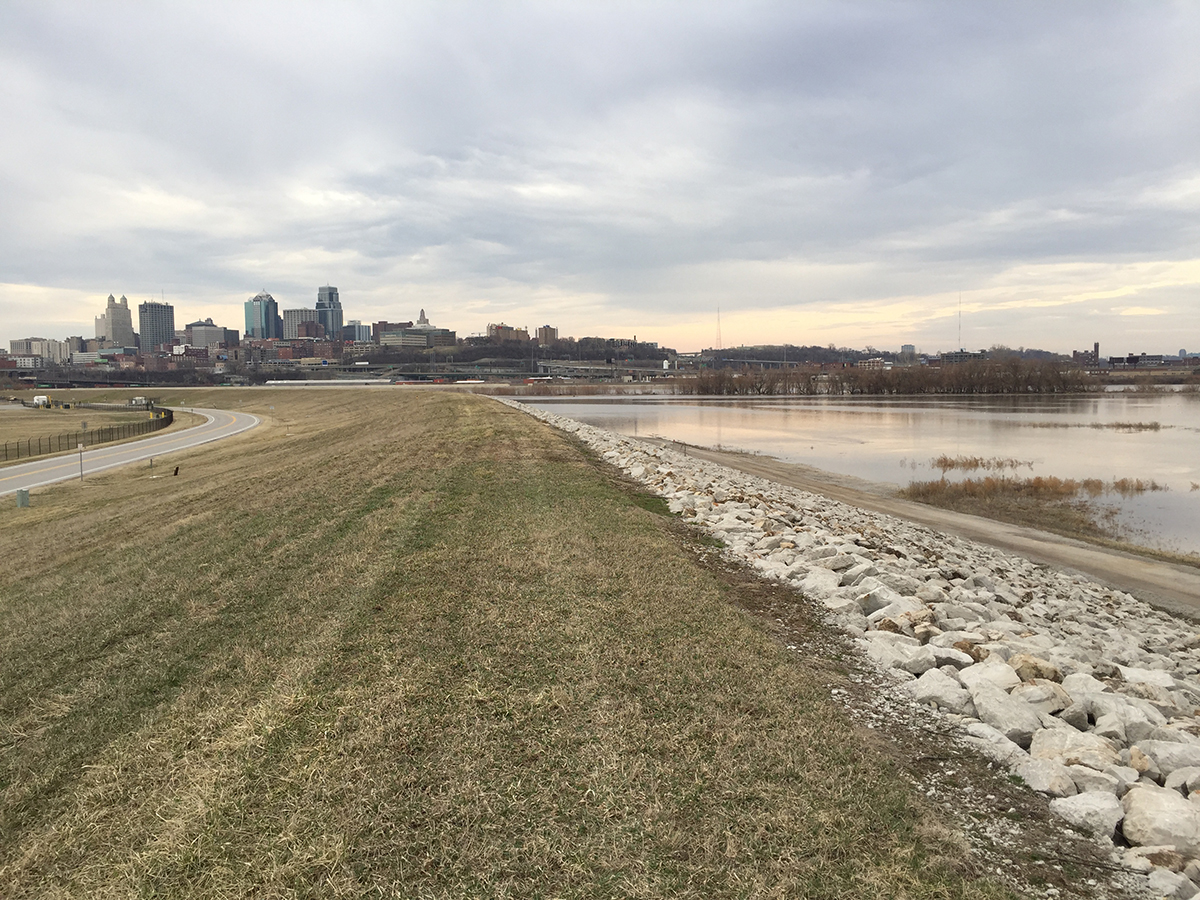A Day in the Life of a Levee Engineer
Posted on Wednesday, April 24th, 2019 by Affinis CorpIn Stormwater, tagged in Tags: flood season, flooding, levee, levees

Flood season is in full swing for many of our clients, which means our flood fighting team is working around the clock to protect those communities. Last week, we sat down with one of our levee engineers to learn what a typical day looks like during flood season. Here’s what Jason Davis had to say.
Jason, tell me about a typical day during flood season.
While each day varies, they always start with checking the National Weather Service’s hydrologic forecast for the specific stream gage nearest the levee location. Then, I respond to any levee sponsors’ questions. During this season, we often spend some time updating and analyzing flood fight plans based on the forecast. Every flood is different, and it’s important to prepare for that.
I also meet with the levee sponsors regularly and notify co-workers internally, if we need to support sponsors or start a flood patrol. When things are particularly critical, we’ll even mobilize a team to support 24/7 monitoring at the Riverside Quindaro Bend Levee District (RQBLD).
As you perform checks, what are you looking for and why?
We’re inspecting the sluice gates to make sure they’re not stuck open and are free of debris. They’re responsible for keeping the water out, so it’s important that they’re functioning as designed. We also inspect the levee toe, slope, and crest to make sure there’s no seepage or sediment. We look to see if sand boils are beginning to form. These are all indicators of potential issues.
In addition to those pieces, we’re also checking the area with the levee sponsors for people. We want to make sure no one is up on the levee who shouldn’t be, as that is a safety issue.
Why is this preparation so important?
It’s important to be ready for whatever happens. If you’re not prepared for a flood, the consequences and risks are high. The forecast is constantly changing, so we have to be able to anticipate the unexpected. No one will ever question if someone was over prepared, but if a levee fails, the effects could be catastrophic.
How does this benefit the levee owners?
We err on the side of safety. This approach protects not only residents and local businesses, but their infrastructure too.
What are people expecting for flood season this year?
We have an above normal snow pack in the mountains and plains, which causes more run-off. The United States Army Corps of Engineers (USACE) is releasing water upstream to allow reservoirs to increase their capacity. Those are all changes that we, as levee engineers, need to be aware of.
Is this flood season different than previous flood seasons?
Moisture in the Missouri River Basin is above what we have recently seen, in terms of snow pack compared to past years. The Dakotas and Nebraska received round two of the “Cyclone Bomb.” Some areas in the Dakotas recently received more than 25 inches of snowfall in a single storm event. The USACE is increasing releases from Gavin’s Point Dam (last Missouri main stem dam) in anticipation of the additional snow melt. The concern is if heavy rain events in Nebraska, Iowa, and Kansas occur at the same time as increased releases from Gavin’s Point. These rain events downstream of Gavin’s Point are unregulated and can setup a flash flood event where the Missouri River stages increase quickly, causing flooding.